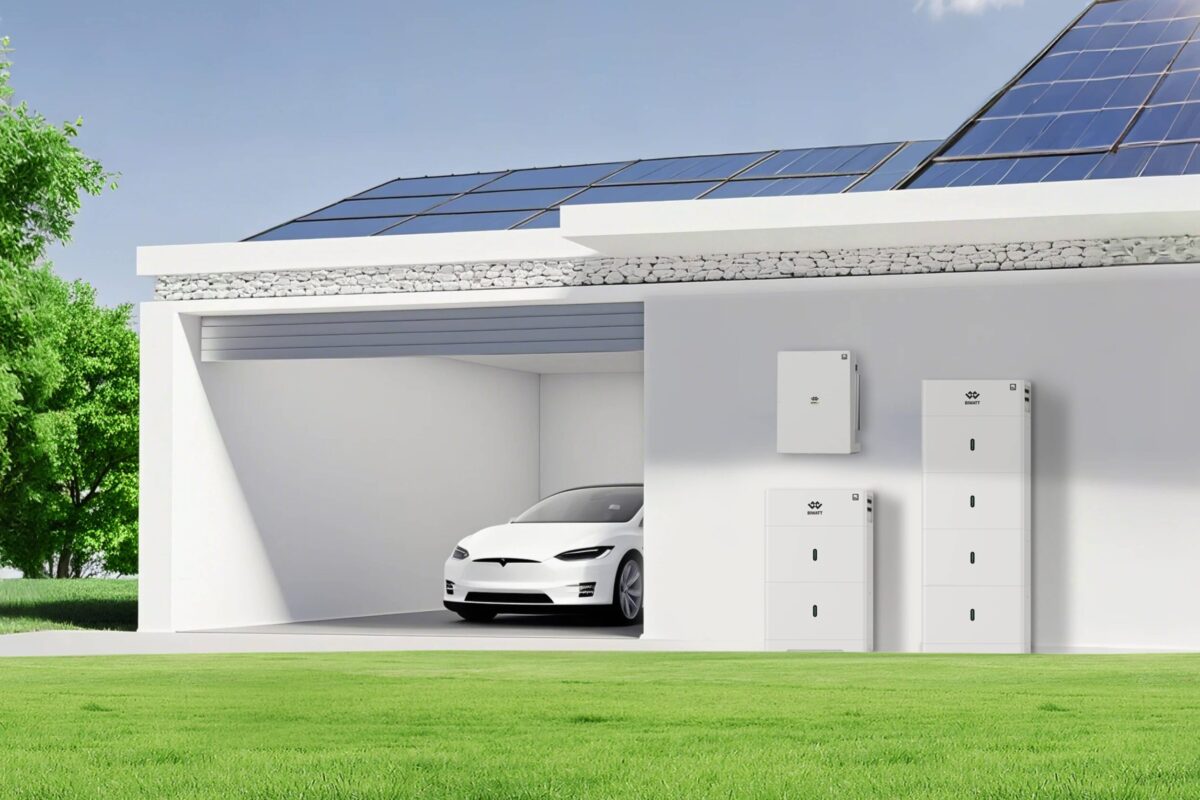At the All-Energy Australia event in October 2022, Dan Shugar, the CEO and founder of US solar tracker maker Nextracker, exhorted listeners – in particular those from the solar industry – to move from “project and megawatt thinking” to a “gigawatt portfolio” mindset. That, he said, would “reduce churn” in renewables development, financing, and supply cycles, and reduce costs.
Analysis by the International Renewable Energy Agency, released at COP27 in Egypt in November 2022, confirmed countries aligned with the Paris Agreement must almost double their 2030 target of 5.4 TW of renewables capacity if the world is to limit average temperature rises this century to 1.5 C.
Gigawatt thinking in solar appears a logical step on the road to 10.4 TW of clean power but a gigawatts-fits-all approach is not always possible.
Some big solar players already have gigawatt-scale plans. Lightsource bp, the renewables developer 50% owned by BP wants 25 GW of solar by 2025 and says it has a 55 GW early-stage project pipeline across 19 countries. The Enel Green Power business of Italian utility Enel has 21 GW of new renewables in its 2023 to 2025 strategic plan, including 4 GW of battery energy storage. And Sino-Canadian PV manufacturer and project developer Canadian Solar has broken ground on 1 GWp of large-scale solar and has 5.2 GWp expected within four years, 9.4 GWp of 90%-certain projects, and a 10.4 GWp early-stage pipeline.
Scratch the surface of gigawatt ambitions, however, and a jungle of national jurisdictions is revealed, with widely varying energy and labor policies, grids unsuitable for an influx of renewables, and supply-chain terrors.
German developer BayWa re is “now thinking in gigawatts” of utility-scale solar, according to Daniel Gaefke, its Asia-Pacific director. Originally a wind developer, BayWa reached a gigawatt of global solar two years ago and, Gaefke says, is “planning to build more than a gigawatt of solar” in 2023.
| Founded | 2009 |
|---|---|
| Turnover 2021 €3.6bn | EBITA 2021 €162.2m |
| Employees 4,000 | Active in 29 countries |
Sites will range from relatively small “commercial rooftops, to half-gigawatt projects” because “every gigawatt counts,” Gaefke says. “Nowadays, if you buy a few hundred megawatts a year, you’re not relevant.” Add Baywa’s solar power equipment distribution activity and the company operates in “multiple gigawatt” terms, says Gaefke, conferring “a big advantage” in negotiating equipment price and delivery.
CEO Shugar says gigawatt thinking at Nextracker has focused on partnering with owner developers “who value a flight to quality,” plus planning projects that add up to gigawatts over multiple years. Aggregating projects helps reduce purchase costs from Nextracker’s suppliers, he says, compared to developers who work on projects in succession “bidding each out to an EPC [engineering, procurement, and construction services supplier] and equipment providers.”
Workforce problems
The workforce required for gigawatt-scale development is problematic and Baywa’s Gaefke describes staff recruitment and retention as “one of the biggest global bottlenecks” for solar. Regions with few labor-movement restrictions attract developers and EPCs eyeing the efficiencies available through a giga approach. Having a big project pipeline in Europe or the US ensures steady work for employees and makes training cost effective. “In Europe, we are very mobile, deploying teams that can work throughout the region,” says Gaefke. “And in the US we get a similar advantage.”
Big projects, delivered by experienced teams, run more smoothly and save costs: “If you have a focused team working on half a gigawatt, you can work very efficiently,” says Gaefke. “It becomes like a factory, rolling out one row [of panels] after another, and you can use more machines.”
While robots or “co-bots” – designed for direct interaction with humans – aren’t yet common in solar project installation, the biggest sites may feature machines to, for example, place modules on assembly tables and carry panels to on-site positions.
That doesn’t help at smaller solar plants, though, nor at challenging installations in land-constrained countries. BayWa’s first Japanese solar farm, on a hilly site in Kagoshima prefecture in 2020, is a good example. The 11.9 MW Kuwabarajo Mega Solar No. 4 project provided a valuable clean energy injection to the grid but economies of scale couldn’t be leveraged in construction. Even if the terrain had obliged, Baywa would not have been unable to mobilize a regional workforce, as Gaefke explains. “It would be extremely difficult to bring an experienced team from Malaysia into Japan, for example, because of labor regulations and separation of markets.”
Accelerate, optimize, repeat
Construction is not the only area in which automation can enable a giga approach. Engineers at Spanish company RatedPower developed its pvDesign software after constantly revising solar plant proposals and designing projects that were very similar. The subscription software enables development engineers to input site coordinates, grid connection points, equipment preferences, and other data to generate an optimized project design as a 3D AutoCAD file with supporting documentation, including yield.
RatedPower says the package can save up to 85% of initial design time and can generate numerous project iterations incorporating re-orientation, equipment changes, and other variables to deliver higher yield or lower costs – at the click of a tab. Site preferences can be copied and pasted as required.
“Because of the time savings, some clients have said they’ve been able to do four times more projects,” says Laura Rodriguez Ramos, RatedPower’s account executive for Oceania, Southeast Asia, and northern Europe.
Grid bottlenecks
Grid constraints are another factor that can impede gigawatt ambitions. Research company Rystad Energy last month identified “gridlock” or “insufficient grid capacity” as “a major impediment to bringing new renewable power online” in Europe.
The Norwegian analyst has logged plans for 530 GW of solar and wind capacity in Europe this decade. “A huge amount of grid capacity will need to be developed, both to integrate new generation capacity into respective countries’ power mixes and to better connect European countries” so the continent can optimally harness what Rystad terms “northern winds and southern sunshine.”
Lack of cross-border electricity interconnections means clean power is being curtailed. Germany, for instance, loses around 5% of its annual solar and wind power because of transmission capacity shortfalls.
Australia offers a different problem. Baywa’s Asia-Pacific director says the country’s long, “skinny” grid notionally favors very large-scale development because “the grid-connection costs are very similar, whether you’re building a 100 MW plant or at 500 MW scale.” The nation’s small population and low manufacturing base, however, ensure energy demand is relatively low, compared to Europe and the United States.
Rooftop risk
The future of grid-connected utility scale solar in markets such as Australia and the United States is “going to be cannibalized by rooftop solar” anyway, according to Tim Buckley, director of public-interest thinktank Climate Energy Finance. If, as expected, Australia has 68 GW of rooftop solar in 2050, the volume of excess electricity injected into the network should mean grid power will be virtually free between 10 a.m. and 5 p.m. “almost every day of the year,” Buckley says.
That would mean utility solar only being viable alongside energy storage which would enable it to shift loads into the evening. “It’s interesting, looking at the US investor queue this year,” says Buckley, “that there are around 1,000 GW of wind and solar projects queued up for transmission access. Of those, 300 GW have battery proposals. That means that almost every project in the western half of America – every utility solar site – now has a battery project attached to it for that very reason.”
But in Australia there is a third way which favors a giga-solar approach: off-grid mega sites in high solar-resource parts of the country which have unique offtakers. Examples include CWP Global’s 26 GW solar- and wind-powered green hydrogen project, the Asian Renewable Energy Hub, and Sun Cable’s 17 GW to 20 GW Australia-Asia PowerLink, which will seek to transmit clean power to Singapore via an undersea cable – although it emerged, this month, the latter project had gone into voluntary administration.
More vast projects could follow, according to Buckley, who says he has spoken to a Japanese investor planning an off-grid, gigawatt-scale solar project in Australia. “He was keen on the Pilbara, for its international-scale port and the ability to do everything behind the meter,” says Buckley, referring to the Pilbara region in northwestern Australia.
The thinktank director pointed to the success of the 2.25 GW Bhadla Solar Park in the Indian state of Rajasthan, commissioned from 2017 to 2020. “The central government worked with Rajasthan and said, ‘Right, you identify the land and we will build one connection point,’” says Buckley. “You’re talking high-voltage, direct-current grid connection.” The government handled tendering and guaranteed electricity offtake, attracting some of the world’s biggest EPCs and investors, who now own 200 MW to 300 MW each at the site. “It’s the biggest solar park in the world,” says Buckley. “The prices and the tariffs were the lowest in the world because it was de-risked, so you could crowd in global capital to do things at scale.”
Grand ambition
The world’s optimal location for gigawatt solar deployment right now is the US, according to both Buckley and Baywa’s Gaefke, thanks to the recent Inflation Reduction Act (IRA). The IRA includes a 10-year extension of the investment tax credit for renewables infrastructure.
“India is by far the largest investment opportunity because of the certainty of 25-year, government-backed power purchase agreements” and the country’s need for 40 GW per year of renewables, Buckley says. “Ironically, the smog is so bad in Indian cities that rooftop solar is really not taking off and government-subsidized electricity also undermines the case for rooftop solar,” he adds, leaving the field clear for utility scale projects.
This content is protected by copyright and may not be reused. If you want to cooperate with us and would like to reuse some of our content, please contact: editors@pv-magazine.com.



Europe seems to be strangely lacking in GW scale solar farms.
Lack of space?
Maybe solar in Europe has to follow wind for scale, and go offshore. There is plenty of room for 100GW of solar in the Adriatic, with calm waters and near access to the industrial heartlands of Europe.